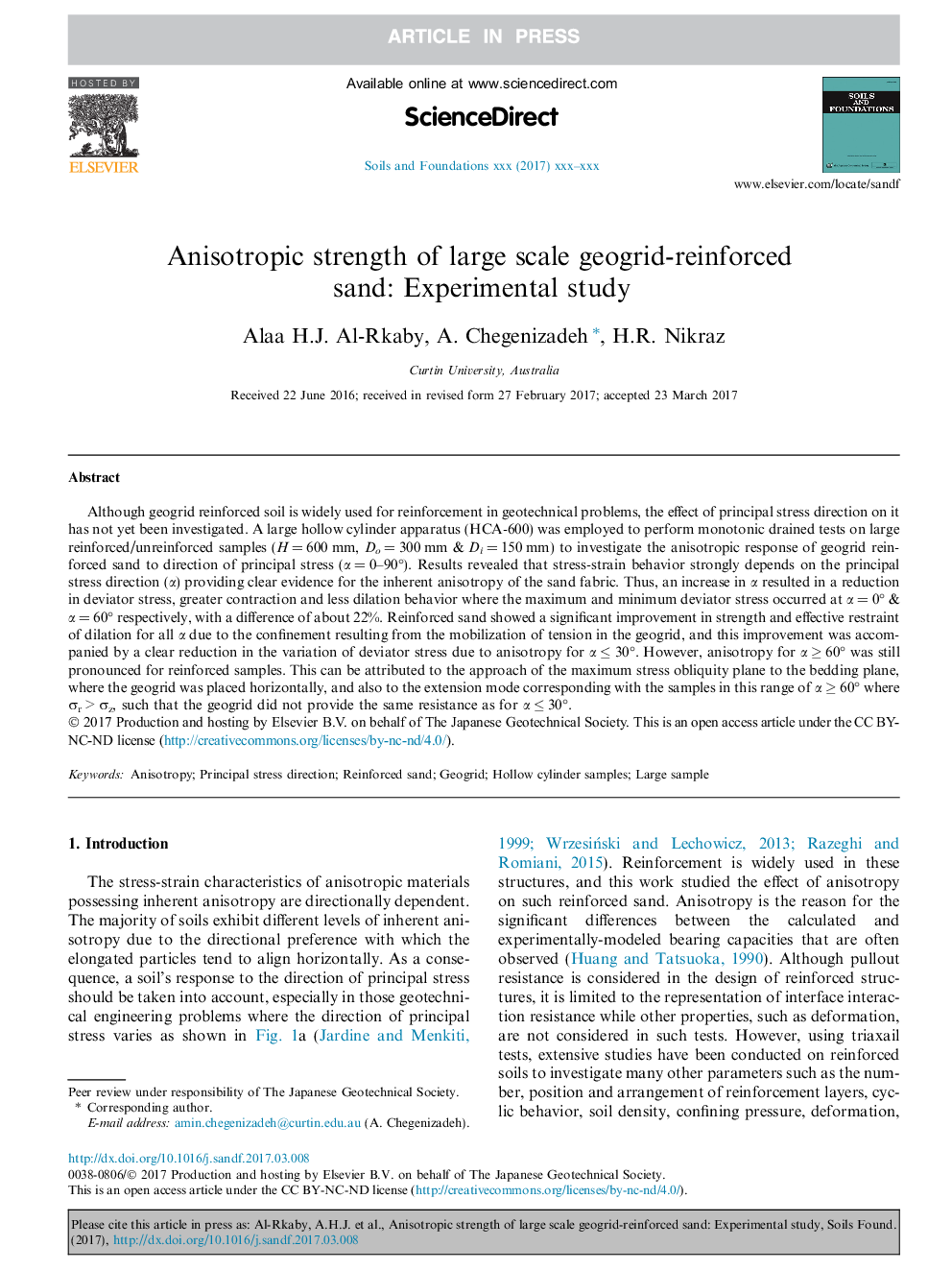| Article ID | Journal | Published Year | Pages | File Type |
|---|---|---|---|---|
| 4927631 | Soils and Foundations | 2017 | 18 Pages |
Abstract
Although geogrid reinforced soil is widely used for reinforcement in geotechnical problems, the effect of principal stress direction on it has not yet been investigated. A large hollow cylinder apparatus (HCA-600) was employed to perform monotonic drained tests on large reinforced/unreinforced samples (H = 600 mm, Do = 300 mm & Di = 150 mm) to investigate the anisotropic response of geogrid reinforced sand to direction of principal stress (α = 0-90°). Results revealed that stress-strain behavior strongly depends on the principal stress direction (α) providing clear evidence for the inherent anisotropy of the sand fabric. Thus, an increase in α resulted in a reduction in deviator stress, greater contraction and less dilation behavior where the maximum and minimum deviator stress occurred at α = 0° & α = 60° respectively, with a difference of about 22%. Reinforced sand showed a significant improvement in strength and effective restraint of dilation for all α due to the confinement resulting from the mobilization of tension in the geogrid, and this improvement was accompanied by a clear reduction in the variation of deviator stress due to anisotropy for α â¤Â 30°. However, anisotropy for α â¥Â 60° was still pronounced for reinforced samples. This can be attributed to the approach of the maximum stress obliquity plane to the bedding plane, where the geogrid was placed horizontally, and also to the extension mode corresponding with the samples in this range of α â¥Â 60° where Ïr > Ïz, such that the geogrid did not provide the same resistance as for α â¤Â 30°.
Related Topics
Physical Sciences and Engineering
Earth and Planetary Sciences
Geotechnical Engineering and Engineering Geology
Authors
Alaa H.J. Al-Rkaby, A. Chegenizadeh, H.R. Nikraz,
